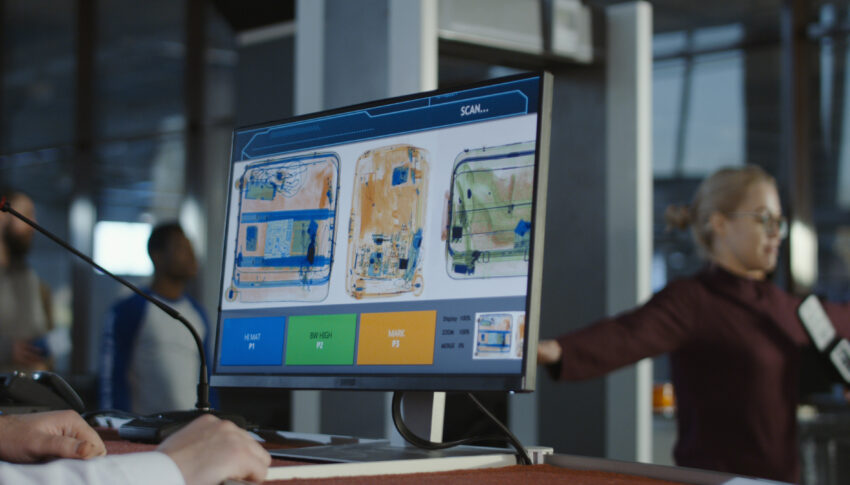New aviation applications for artificial intelligence are coming thick and fast, especially within the airport operations sphere. Following up on a recent security processing partnership with Schiphol Airport in Amsterdam, we sat down with Jim McLaughlin, chief technology officer at security expert technologists Pangiam, to learn more about how AI can be applied to speed up airport operations and improve efficiency.
Pangiam’s security scanning work in the field of airport operations is called Project DARTMOUTH, after the Dartmouth Summer Research Project on Artificial Intelligence of 1956. A collaboration with Google Cloud using Open Architecture standards, it applies AI and pattern analysis to security scanner images, adding an additional layer of automated checks to the required manual review of the scanned pictures by trained security staff.
“Currently, the process requires a visual review of the CT [computed tomography] image of each carry-on bag. Al-based screening can support the human x-ray screen reader in identifying threats or areas of concern more quickly, thereby reducing the time it takes to review and clear a carry-on bag,” McLaughlin tells us. “This allows officers to focus only on certain bags or areas of risk within them providing a better approach to risk management. Both those efforts help improve security and increase consistency.”
Adding this sort of additional layer of protection within security is a smart move, with little to no additional physical space required within the already confined areas of security screening zones. It’s also an inherently scalable solution, and the way the machine learning is designed means that its performance only increases as the datasets — of both automated scans and human inputs — grow.
The benefits, McLaughlin says, are “primarily increased capability, accuracy, and consistency. AI can identify prohibited items like weapons that may be difficult for the human eye to spot, while increasing the speed of the process. Algorithms do not get distracted, nor tired, and provide a persistent level of known detection to augment and guide the role of a human x-ray screener.”
Notably, the algorithms are more complex than might be expected at first: not just identifying specifically banned items like liquids, sharp items or weapons, which one might expect, but matching patterns that might not be obvious at first glance.
“Our technology uses state of the art AI algorithms to analyse a CT image of a bag in seconds and look for prohibited items like weapons, or patterns that are either known to be of concern, or just don’t look right,” McLaughlin explains. “Pangiam’s Project Dartmouth takes a deeper look at the bag and augments the security officer role, by identifying items of concern and enhancing an officer’s capability to recognise more complex threats across multiple bags or lanes.”
Challenges include perennial privacy concerns when applying AI, machine learning and other algorithms, particularly within jurisdictions like the European Union that have strong citizen privacy protections such as the GDPR. It’s possible that scans could be linked to particular passengers, either through systems integration (like a boarding pass being scanned as a tray goes into the scanner) or through the images (an ID, credit card or frequent flyer card with a passenger’s name embossed).
In that case, these concerns are magnified, especially if sensitive personal information can be gleaned from the scans. Medical devices or religious items, for example, might be detected by the algorithm, which would enable systems to potentially draw conclusions about protected characteristics. Much consideration will need to be given here.
Beyond the hand luggage security zone, McLaughlin tells us, “the same principles can apply to hold baggage and cargo, and Pangiam is actively working on projects in this space.”
Indeed, he notes, “last May, Pangiam launched Pangiam Bridge in partnership with West Virginia University to develop new cutting-edge artificial intelligence solutions for customs authorities worldwide.”
Published 12 December 2023




